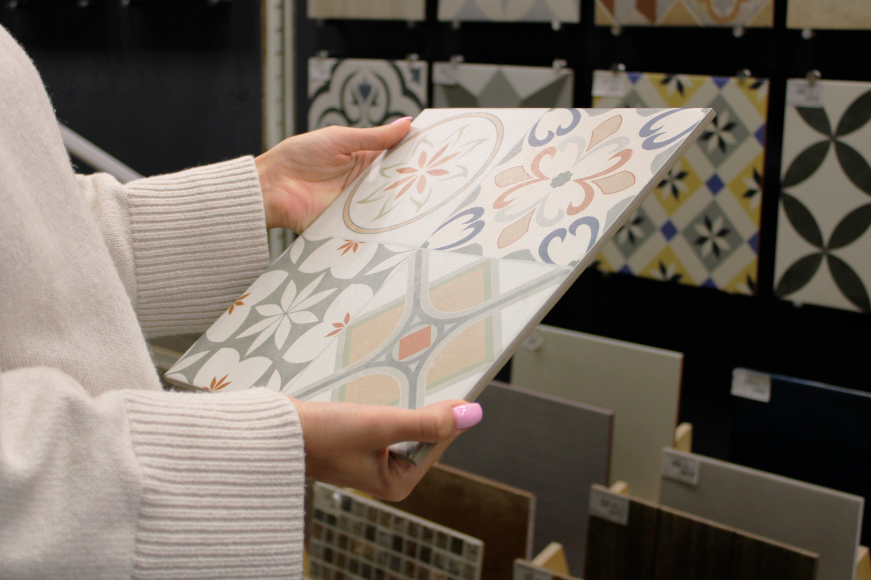
Today, ceramic tiles are one of the most popular materials for cladding premises, since they are applicable to all types of surfaces - walls, floors, and sometimes ceilings. It is important to decide which tile is suitable for the room in terms of technical and operational properties and visual indicators. Tiles can be both a practical solution for a room and an excellent decorative element.
Ceramic tiles classification
- Single-fired tiles - based on porosity, they are laid on the floor or walls, indoors or outdoors;
- Tiles made of porcelain stoneware - due to their high strength, they do not require additional glazing, suitable for floors;
- Ceramic granite - has high strength, is resistant to the influence of environmental factors and is an environmentally friendly facing material, therefore, it makes it possible to lay outside and looks effective when decorating the interior;
- Pressure glazed ceramic tiles - used for both flooring and walls;
- Clinker tiles - have high mechanical strength and are resistant to the influence of chemicals, respectively, applicable for floor and wall cladding. When laid with a wide seam, it looks effective due to not quite even edges.
Bathroom tiles
- Laying ceramic tiles in the bathroom is considered the most appropriate option for finishing rooms with high levels of humidity. When choosing a tile for a bathroom, it’s area should be taken into account - for small bathrooms, it is optimal to select tiles with a vertically arranged pattern, which will visually increase the height of the ceiling. For large bathrooms, tiles with a large and bright pattern will be a beautiful solution. When choosing bathroom tiles, rely on the following tips:
- external design of the product is an individual parameter depending on taste preferences;
- technical and operational characteristics - tiles of the first grade with red markings (AA markings), possessing high parameters of resistance against aggressive environments. According to the parameters of resistance to loads and abrasion, it is worth choosing a class I-III tile (for rooms with low load rates);
- the shape and size of the tiles - the size of the tiles will affect the size of the joints and the larger they are, the higher the risk of mold and mildew due to high humidity in the room. A little advice - the bathroom should be equipped with a ventilation system;
- safety parameters - by type of surface, tiles are glossy and matte. For wall cladding, preference is given to glossy, however, matte will not be inappropriate. For laying on floors, matte tiles with a high level of roughness must be used, which reduces the risk of falling from slipping.
Kitchen tiles
The most practical and high-quality material for tiling the floor in the kitchen is ceramic tiles, because:
- has high strength and wear resistance;
- withstands temperature extremes;
- differs in moisture resistance;
- ceramics are neutral to the effects of chemical compounds and substances that are used to care for the kitchen;
- it's an environmentally friendly material that does not emit toxic substances into the air.
It's worth making a choice in favor of tiles with a non-slip coating for the kitchen, that is, options with a matte, non-glazed, but smooth surface (the embossed surface will quickly accumulate dirt and will require frequent thorough cleaning). In addition, the tiles should have sufficiently high parameters of mechanical strength, resistance to aggressive media and ultraviolet rays, and low moisture absorption parameters. Large tiles (60x40 or 60x60 cm) are also preferable for the floor, as it allows you to minimize the number of seams on the floor and create a more durable floor layer.
Kitchen apron tile
Ceramic tiles on the kitchen apron are quite a practical and versatile finishing option, given the ease of maintenance, as well as beautiful visual indicators. A variety of color options, as well as technologies available today (imitation of various textures, applying a photo print to the surface) allows you to implement any ideas for decorating a kitchen apron. For an apron, you can choose tiles of any shape and size, preferably with the following features:
- resistance to temperature extremes, moisture, chemical compounds and aggressive environments;
- smooth surface from which it is easy to remove splashes, carbon deposits and other contaminants.
When it comes to choosing the tiles color, you need to take into account kitchen general color scheme, furniture and lamps in the room. For classic kitchen interiors with expensive furniture and finishes, it's better to choose tiles in a restrained color scheme. At the same time, bright tiles with large and expressive patterns can be an ideal option for bright kitchens.
That's all about ceramic tiles, for more check out catalogue.
“Domino” wishes you all the best!
